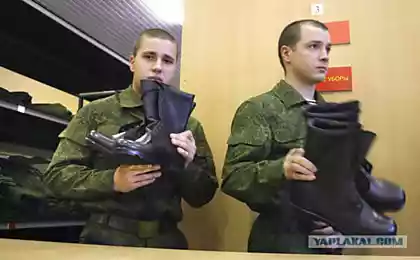622
The US military used the brains of soldiers as neural networks for image analysis

The military research laboratory MIND («Mission Impact through Neurotechnology Design», or performing tasks through neurotechnology), experts are working on the technology of accelerated image analysis by processing the signals from the human brain. The military believed that in this way it will be possible to efficiently process large amounts of information.
The objective of computer vision in general and the analysis of the photographs in particular information technology professionals engaged in application of artificial neural networks to, approximately simulating the human brain. However, the army decided to act differently - instead of building a computer neural networks and complex process of learning to use something in the army lacking in abundance. Namely, a soldier.
The human brain is better than any artificial neural network to cope with the image recognition. This computer network, you need a long "train" on a specially selected set of images. The man himself is trained for this, and all my life. Why not use it "computing power" for his usual tasks?
To test the concept of experimental military were asked to choose one of several objects (boat, panda, strawberry, butterfly, chandelier), and not to disclose his choice. Then, with a frequency of about once per second, the researchers showed them pictures of items, taking readings of the electroencephalogram.
An employee does not have to respond to the appearance of the image - it was enough to be considered in the mind of their number. When displayed photographs of the object conceived by the test, the device read out a clear signal that can be interpreted unambiguously. After completing the two-minute test can be 100% accurate to say which of the five subjects was conceived guinea.
In the second test to verify the capabilities accelerate the test showed only part of the picture, but these parts has been shown for about five pieces per second. And again, on the testimony of the EEG came to see clearly at what point the brain recognizes the object conceived by a fragment of the image.
Dr. Anthony Rice [Anthony Ries], specialist in cognitive neuroscience, explains the essence of the idea. The fact that the capacity to collect information from satellites, drones and finishing, have already exceeded the possibility of processing the data.
When the analyst is studying a large aerial photograph it to find the right object, it takes a lot of time. If the military will be able to apply the developed technologies, then we can beat the big picture into small pieces, quickly "scroll" them before the eyes of the analysts, and with the help of data from EEG immediately process the results.
Then, instead of gradually study a map, make notes or any mark, losing precious time, the analyst will only look at the screen, focusing on the interests of its object (the convoy, caravan, battleship, etc.).
Now that the concept has right to exist, the next step of research is becoming dropouts spurious signals EEG, which can occur due to various psychological and physiological factors inherent in a living organism.
Source: geektimes.ru/post/265994/
UK will close all coal-fired power plants for 10 years
Moderate coffee consumption associated with improved health























